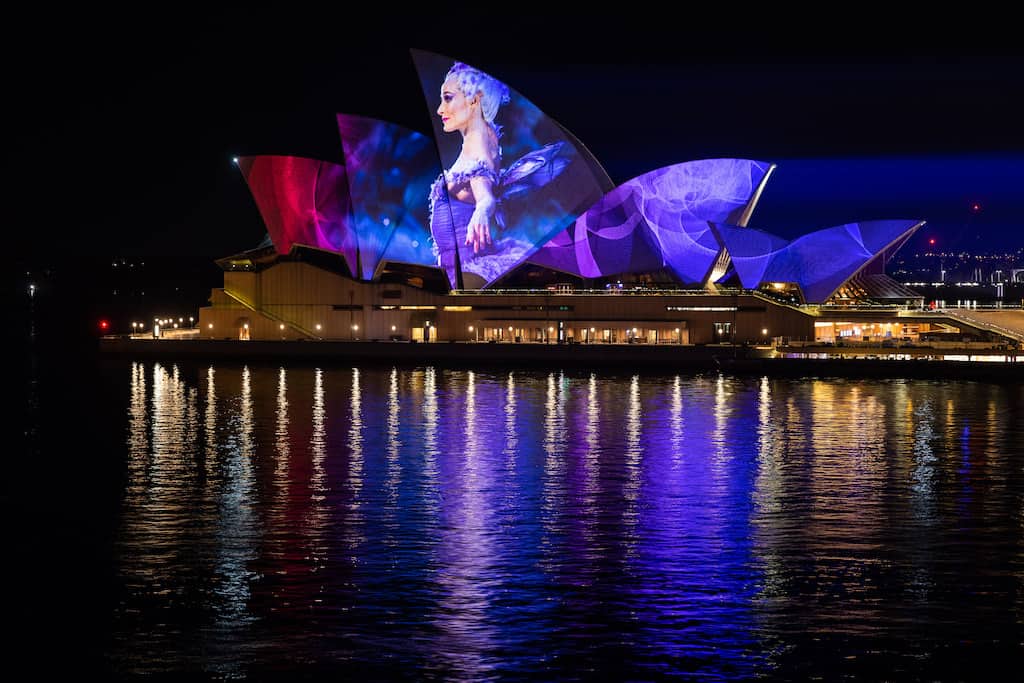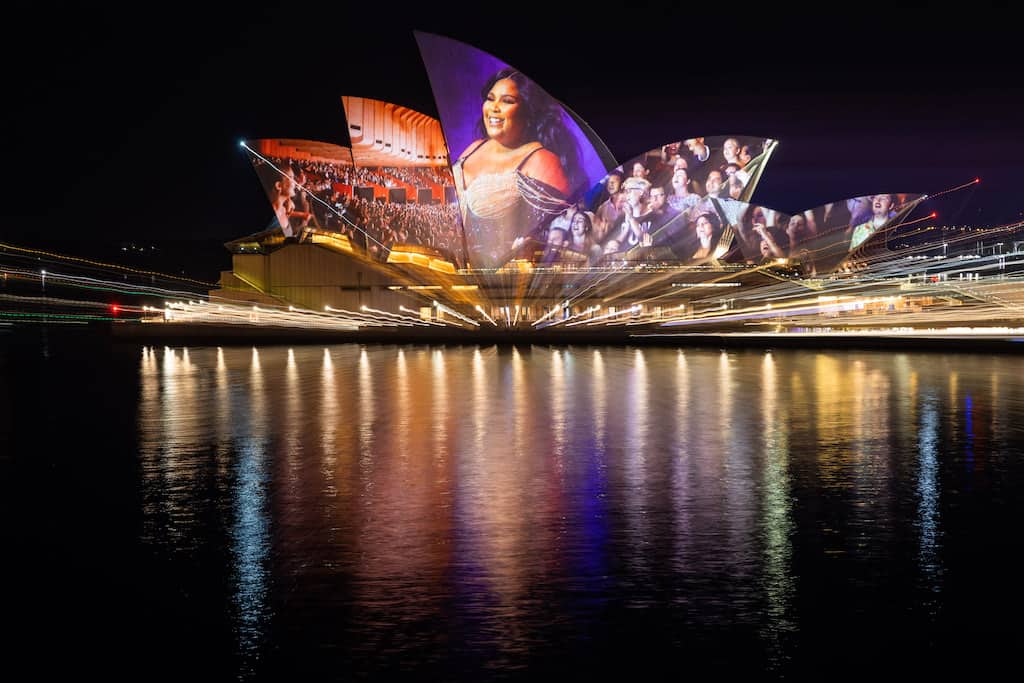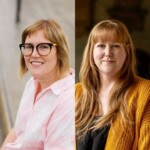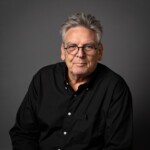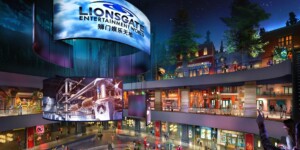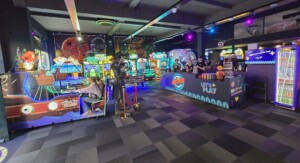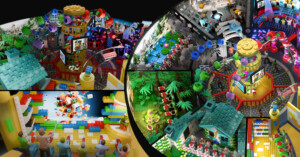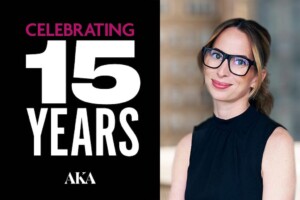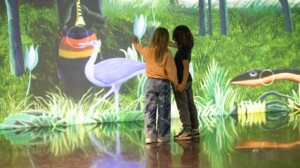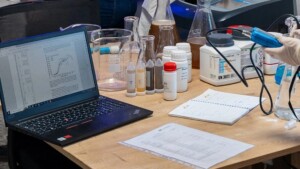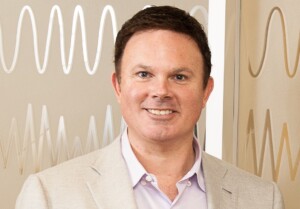Art Processors, the experiential design consultancy, worked on the 50th-anniversary celebrations for the iconic Sydney Opera House in Australia. For From the Sails: Light Years, a spectacular celebration that featured stunning light projection and an immersive live-sync soundscape, the firm created an original film artwork. This was projected across the “sails” of the western facade.
From the Sails: Light Years was the first in a year-long programme of events to commemorate five decades of the Sydney Opera House. The show, which ran from 19 – 30 October, was created by Sam Doust and Art Processors to celebrate the story of the building’s design and construction, the opening in 1973, and its ongoing contribution to the community.
“The film is based on a circular sense of time—it loops and doesn’t start or finish,” says Doust, principal artist for the project and group director of creative services at Art Processors. “This is an acknowledgement of the history of the land the Opera House is resting on, Tubowgule, which has been a First Nations meeting point since time immemorial. It says this House was chosen to be on this incredible place.”
Speaking about the year-long festivities, Sydney Opera House CEO Louise Herron AM said: “The Opera House is a gift, an immense source of pride to our community, and one of the busiest performing arts centres in the world. Now, after 50 years of creativity and a decade of renewal, we’re throwing the doors open and inviting everyone to be part of a year-long festival celebrating the building, its history and all forms of contemporary culture.
“I hope people everywhere come to experience what’s on offer and reflect on the Opera House’s past, present and future.”
Perfectly synced audio
From the Sails: Light Years used Art Processors’ live audio-visual synchronisation technology to envelop audiences in the musical narrative and storytelling, all without audience members needing to download an app. By simply scanning a QR code, viewers could listen to the soundtrack on their own device wherever they were, whether that was across the Harbour, on the water or at a local venue.
“To extend the audio element of the sails projection to the whole harbour has been a great endeavour,” says Nic Whyte, Art Processors’ co-founder and chief technology officer. “Anyone who can see the sails can now listen to the soundtrack perfectly synchronised. This supports a broader audience, and enhances immersion and a sense of belonging.”
This AV synchronisation solution was a key part of the experience, enabling the audience to be immersed in the show without the need for installing a huge number of speakers. It allowed everyone to listen to the film’s soundtrack, in precise sync with the visuals, from all angles.
Drawing on experience
In order to come up with a solution that met the needs of this particular project, the Art Processors team drew on its experience creating immersive audio for the new Bob Dylan Center in Tulsa, Oklahoma, where guests receive an iPod and a pair of headphones on entry. during their visit, they tap their device on beacons at key displays to generate audio, which is then delivered seamlessly alongside the visual content.
Talking about the challenge of scaling this concept up for the Sydney Opera House, Whyte says:
“The system we built [for the Bob Dylan Center] was to deal with local latency—latency over a local network inside of a building where you’re controlling the infrastructure. But whether that system could be extended and made robust enough to work over a wide area network—the internet, essentially—was the thing we needed to prove.”
Rob Keniger, lead mobile engineer, adds:
“At the Bob Dylan Center, we have a sync server that sits on-site. What we did first was to get that server running in the cloud. We then did some prototyping with essentially a stripped-down version of the Bob Dylan Center player on iOS to see if that would work. We got that working very quickly and the stretch goal was essentially to see if we could then develop a web-based client, so that we could play and sync the audio in a player just on a website.”
Developing a solution
The team also needed to get the audio latency right, explains Adam Phin, senior engineer – front end:
“Our goal for latency was originally set at 250 milliseconds, which is way too high. But from monitoring [the AV sync], unless something happened in the background of the phone such as an incoming call, we were usually at 20 milliseconds out which is very low.”
The team developed a proof of concept for their solution and presented it to the Sydney Opera House as a live test within just 10 days.
While the demo was done with just a handful of devices, Art Processors was confident in the scalability:
“We can effectively scale up to as many users as we need,” says Anders Rasmussen, senior engineer – systems. “If we could pack a stadium with 100,000 people, we could probably handle that. We tested it to tens of thousands of connections in our simulated tests before the project went live.
“The solution of scaling these servers relies on the fact that we only send messages in one direction, and every client that’s connected to the server will receive the same message. The servers don’t need to change these messages, so it’s very easy for us to send these messages out to everyone.”
A frictionless experience
The AV sync solution led to a frictionless experience – not just for the guests, but also for the other teams, for instance, those running the projection systems. Art Processors received positive feedback from its projection partners for From the Sails: Light Years, as the work required to establish the integration was much less, compared to native apps that drive the time code across the entire system.
“Our solution is quite passive,” says Keniger. We just require them to send us a signal at certain points and we just listen for that.”
The firm sees many more possibilities for this new platform. Phin says: “Eventually this can be provided either through the web or through native apps. We’ve got options to choose what audio is being streamed, so the next step is to set up something where multiple presentations are being shown and you can select between different things in a space that has a number of synced pieces running. You could even do something with augmented reality. The sky’s the limit.”
Reflecting on the Sydney Opera House project, Rasmussen concludes:
“If the success of this synchronisation technology can be measured by a sense of wonderment imparted upon the viewer, then the reaction of our own designers and engineers working behind the curtain is an indication of just how immersive it can be. It is just magical to see it light up and to hear the audio. I know how it works, but it’s still magic.”
Art Processors also recently worked on Decoded: 75 Years of the Australian Signals Directorate, a new exhibition at the National Museum of Australia.
All images credit Daniel Boud


